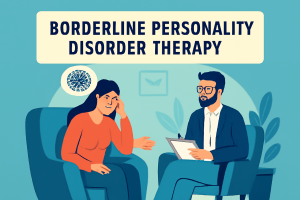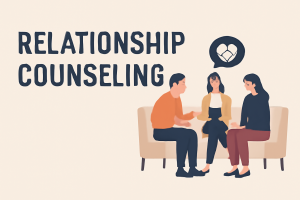When anxiety feels overwhelming, it’s easy to get caught in a loop of racing thoughts, tightness in the chest, and restlessness. One simple yet powerful grounding technique many therapists recommend is the 333 Rule for Anxiety. This method helps you regain control by focusing on your senses and the present moment. It’s not just another quick fix — it’s a mindfulness-based tool designed to quiet your mind and ease tension naturally.
The 333 Rule Anxiety technique encourages awareness through sight, sound, and movement. By gently redirecting your thoughts away from worry, you anchor yourself to what’s real and present. This approach has become a favorite among mental health professionals because it’s easy, discreet, and can be practiced anywhere — whether you’re at work, home, or in public.
Understanding the 333 Rule: A Grounding Technique That Brings Peace
At its core, the 333 Rule Anxiety method involves identifying:
- Three things you can see — Look around and name three visible objects, such as a plant, your coffee mug, or a nearby picture frame.
- Three things you can hear — Focus on external sounds: birds chirping, distant traffic, or your own breathing.
- Three parts of your body you can move — Gently move your shoulders, stretch your fingers, or tap your feet.
This three-step process reconnects your mind and body, bringing you back into a sense of balance.
From a therapeutic perspective, the 333 rule works by activating the parasympathetic nervous system — the body’s “rest and digest” mode. As your attention shifts to your environment, your brain reduces the fight-or-flight response that drives anxiety.
Why it works:
- Encourages focus on external cues instead of internal worry
- Lowers physical tension and heart rate
- Improves awareness and self-regulation
- Can be practiced anywhere, anytime
If you’d like to explore more holistic ways to manage anxiety, our licensed therapists at Live Life Now Therapy can guide you through personalized grounding techniques and cognitive-behavioral tools that fit your lifestyle.
The Psychology Behind the 333 Rule for Anxiety
Anxiety thrives on what-ifs and future-focused fears. The 333 Rule Anxiety technique helps you reorient from “what might happen” to “what is happening now.”
When you consciously name what you see, hear, and move, your prefrontal cortex (the brain’s reasoning center) becomes engaged. This naturally calms the amygdala, which is responsible for fear and emotional reactivity.
According to experts at the National Institute of Mental Health (NIMH.gov), grounding and sensory techniques like the 333 rules are highly effective in reducing acute stress responses. These methods teach the brain to distinguish between real danger and perceived threats — a vital skill for those managing chronic anxiety or panic attacks.
Additionally, this technique supports mindfulness-based therapies such as Cognitive Behavioral Therapy (CBT), often recommended in professional treatment plans for anxiety disorders. When combined with therapy, lifestyle changes, and self-care routines, it can lead to long-term emotional regulation and resilience.
Therapeutic Tip: Practice the 333 rules daily — even when you’re not feeling anxious. Like a muscle, mindfulness strengthens with repetition.
How to Guide Someone Through the 333 Rule Anxiety Exercise
If you want to support someone experiencing anxiety, guiding them through the 333 rule can be deeply comforting. Keep your voice calm, slow, and reassuring. Begin with gentle instructions:
“Let’s take a moment to focus on right now. Can you look around and name three things you see?”
Allow them time to respond or simply observe. Continue softly:
“Now, listen for three sounds — anything around you, near or far.”
Finally:
“Can you move three parts of your body — maybe your shoulders, your hands, your feet?”
This sequence helps redirect attention from anxious thoughts to sensory awareness. End the exercise with reassurance:
“You did great. Let’s take a slow breath together.”
This compassionate approach fosters emotional safety and grounding. You can use it during therapy sessions, in support groups, or even with friends and family.
Key Tips for Effective Guidance:
- Maintain steady eye contact (if appropriate)
- Avoid rushing; allow natural pauses
- Validate their feelings after the exercise
- Encourage consistent practice for lasting benefits
For personalized guidance on grounding techniques or therapy for anxiety, connect with us at Live Life Now Therapy’s Anxiety Counseling Services — where healing begins with mindfulness and compassion.
Final Thoughts
The 333 Rule Anxiety method is more than a quick distraction — it’s a tool for presence, balance, and emotional healing. Whether you’re managing mild stress or chronic anxiety, learning to ground yourself in the present can make a world of difference.
Call to Action:
If anxiety is affecting your daily life, don’t face it alone. At Live Life Now Therapy, our professional therapists specialize in anxiety management and mindfulness-based techniques that empower you to live with clarity and calm.
Explore our services page to start your healing journey today.
You deserve peace — and it begins right here, right now.







